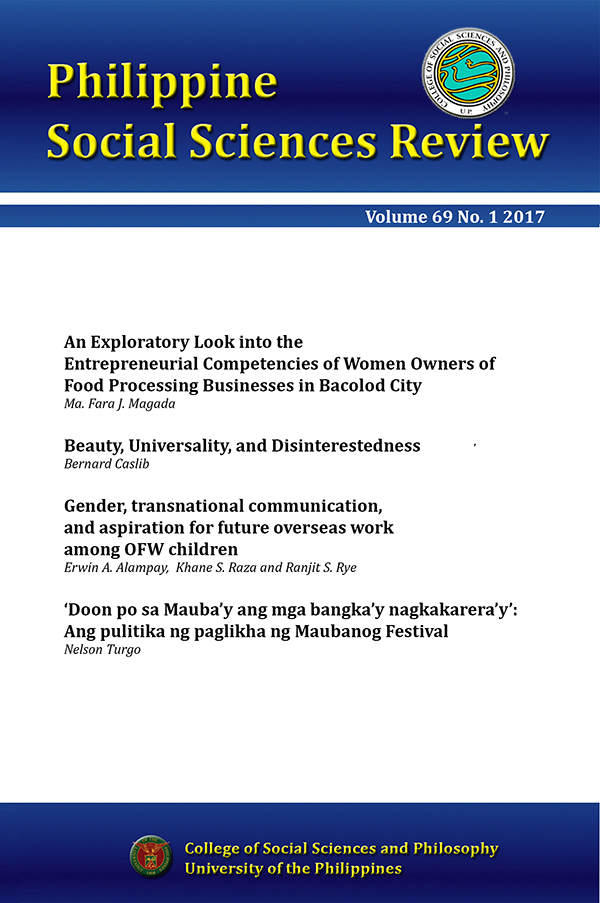‘Doon po sa Mauba’y, ang mga bangka’y, nagkakarera’y’: The politics of the production of Maubanog Festival
Abstract
The Philippines plays host to countless festivals. It is estimated that no less than 800 festivals are being celebrated in the country every year. The reason for celebration varies from thanksgiving to first harvest, to paying homage to the town patron saint to celebration about the town’s dominant and well-known industry or product. Festivals could be as old as the foundation of the town or place itself, signalling its deep rooted twinning with the locale’s history. It could also be very new, created as a response to a need, whether cultural or economic. Maubanog Festival, the focus of this article, belongs to the latter as it was celebrated only in 2003. As a new kid on the block, as it were, Maubanog Festival undergoes a process of defining and refining its image, its very relevance in relation to other festivals in the country. What eludes researches, however, is the backdoor negotiations and interventions that characterize this process. In turn, this process—the ‘unseen’ and the unheard part of many festivals—shapes the very contours and edges of the Maubanog Festival.
Published
2018-02-22
How to Cite
TURGO, Nelson.
‘Doon po sa Mauba’y, ang mga bangka’y, nagkakarera’y’: The politics of the production of Maubanog Festival.
Philippine Social Sciences Review, [S.l.], feb. 2018.
ISSN 2672-3158.
Available at: <https://journals.upd.edu.ph/index.php/pssr/article/view/5985>. Date accessed: 01 oct. 2025.
Section
Articles
Keywords
culture, festival, identity, Mauban, town fiesta


